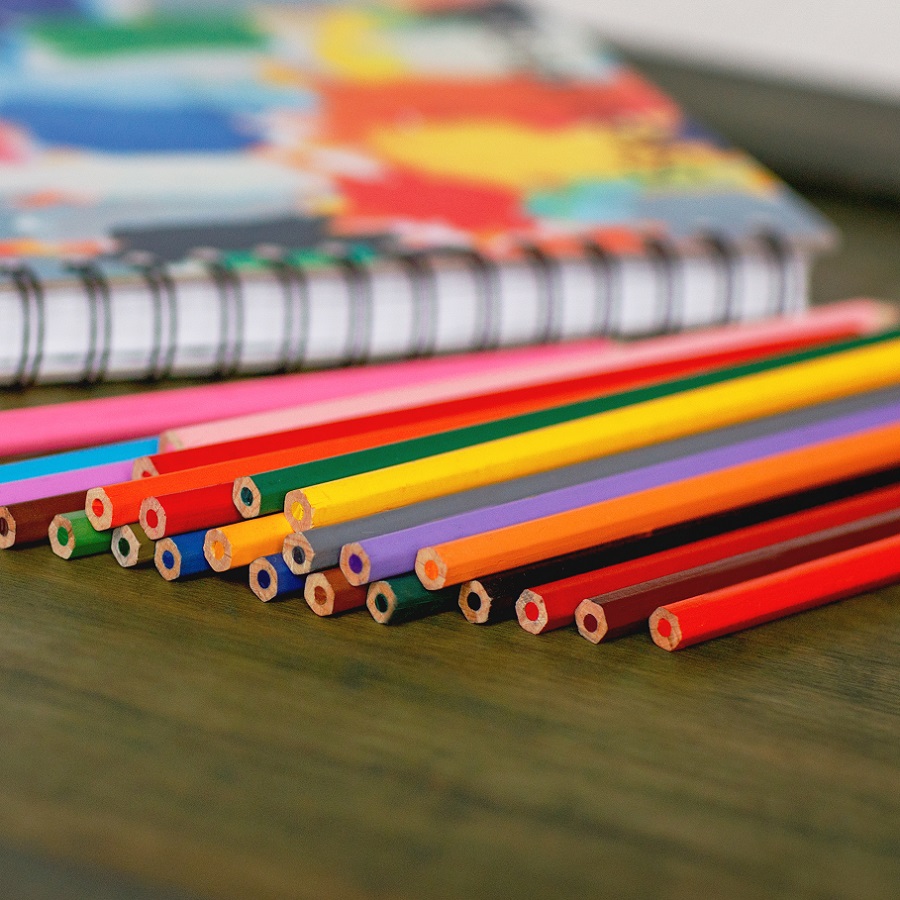Coloring pencils are a fundamental tool for artists, students, and hobbyists alike. Their versatility and ease of use make them an essential item in any creative toolkit. Whether you are a professional artist or someone who enjoys doodling in your spare time, the right set of coloring pencils can make a significant difference in your work. Here, we explore the world of coloring pencils, offering insights into their composition, types, and tips for choosing the best ones to enhance your artistic journey.
Exploring the Components of Coloring Pencils
Coloring pencils are composed of several key ingredients that contribute to their performance and quality. Understanding these components can help you make an informed choice when selecting your next set of pencils.
-
Pigments

- Pigments are the primary component responsible for the color of the pencils. There are two types of pigments used in coloring pencils: natural and synthetic. Natural pigments are derived from substances like ochre, charcoal, and limestone, offering earthy and muted hues. Synthetic pigments, on the other hand, are chemically produced and can create a broad spectrum of vibrant colors. The choice of pigments impacts the richness and longevity of the colors in your artwork.
-
Fillers
- Fillers like wax and talc are added to give the pencil core its texture and hardness. These materials also help reduce the cost of the pigments. The type and quantity of fillers used can affect the smoothness and blending ability of the pencils. For more professional-grade pencils, fillers are carefully balanced to ensure a consistent and pleasurable drawing experience.
-
Binders
- Binders are substances like glycerides, waxes, and resins that hold the pigments and fillers together, forming a cohesive pencil core. The quality of the binder determines how well the pencil performs, particularly in terms of laydown and blending. High-quality binders allow for smooth application and richer color payoff.
-
Wooden Casing
- The wooden casing encases the pencil core, providing structure and making it easy to handle. Commonly used woods include linden, poplar, and cedar. The quality of the wood affects how well the pencil sharpens and how comfortable it is to hold. Premium pencils often use higher quality wood, which ensures durability and a pleasant grip.
For additional information on the materials and production processes of coloring pencils, you can visit pencilhistory.com.
Choosing the Right Type of Coloring Pencils
Coloring pencils can be broadly categorized into three types: oil-based, water-soluble, and pastel coloring pencils. Each type has its unique characteristics and applications.
-
Oil-Based Coloring Pencils
- Oil-based coloring pencils are known for their vivid and saturated colors. They have a waxy core that allows for a unique texture and layering effect. However, they are less suitable for creating multiple layers of color and are challenging to erase. These pencils are ideal for artists who want bold and intense colors in their artwork.
-
Water-Soluble Coloring Pencils
- Water-soluble coloring pencils can be used both dry and wet. When used dry, they behave like regular coloring pencils but with more natural and softer hues. When water is applied, the pigments dissolve and spread, creating effects similar to watercolor paintings. These pencils are perfect for artists who enjoy blending techniques and achieving a watercolor-like finish.
-
Pastel Coloring Pencils
- Pastel coloring pencils have a soft, powdery core that provides excellent coverage and a distinct grainy texture. They are prone to smudging and can dirty the artwork if not handled carefully. These pencils are best for creating soft, blended effects and are often used for portrait and landscape drawings.
For a professional range of coloring pencils,
durzerd.com
offers high-quality options tailored to various artistic needs. For smaller batch purchases,
cpencils.com
is a great resource for hobbyists and students.
Practical Tips for Using and Maintaining Coloring Pencils
To get the most out of your coloring pencils, it’s essential to use and maintain them properly. Here are some tips to help you along the way:
-
Proper Use
- Use light, even pressure to build up color gradually. This technique helps in achieving smooth transitions and reduces the risk of breaking the pencil core.
- Experiment with different strokes and layering methods to find the effects you like best.
- Keep experimenting with blending colors to discover new shades and gradients.
-
Maintenance
- Always use a sharpener designed for coloring pencils to prevent chipping and breaking. A dull sharpener can splinter the wood and damage the core.
- Store your pencils in a cool, dry place to prevent the wood from swelling or contracting, which can cause the core to crack.
- Keep your pencils in a case or organizer to avoid damage and ensure they are easy to find when needed.
For more tips on maintaining and using your coloring pencils effectively, visit artistsnetwork.com.
Coloring pencils are a wonderful medium that offers endless possibilities for creativity and expression. By understanding their composition and types, and adopting proper usage and maintenance practices, you can make the most of these versatile tools and bring your artistic visions to life.



